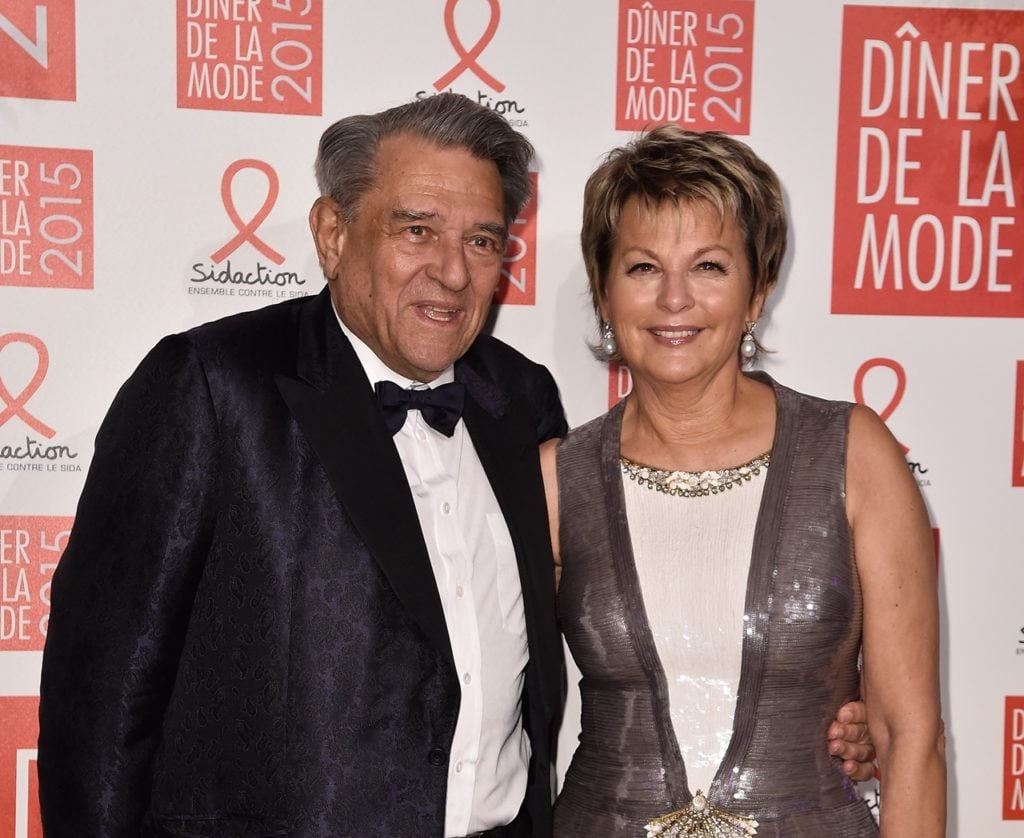Auctions
In Continuing Selloff, UCCA Founder Guy Ullens Unloads 54 More Brand-New Chinese Artworks
Not everyone is pleased about the Belgian collector's decision to sell.

Not everyone is pleased about the Belgian collector's decision to sell.

Julia Halperin

The Belgian mega-collector Guy Ullens and his wife Myriam have sold 32 works from their extensive holdings of Chinese contemporary art for nearly $4 million, with plans to sell 22 more pieces privately over the next 10 days. But not everyone is pleased with the couple’s decision to put their collection up for auction.
The sale, held at Poly International in Hong Kong on June 4, is part of a massive downsizing effort on the part of the collectors, who have been leading figures in the Chinese art world for the past decade. Last year, they announced plans to sell their museum, the Ullens Center for Contemporary Art (UCCA) in Beijing, as well as their collection of Chinese contemporary art.
The auction included works by Liu Wei, Wang Guangle, and Wang Yuyang and made ¥25.3 million ($3.7 million). The majority of the artworks were created between 2010 and 2015—a relatively quick turnaround from the studio to the auction block. The sale had a 94 percent sell-through rate and exceeded the pre-sale estimate of ¥16 million ($2.35 million); 32 of the 34 lots found buyers. Poly will also handle the private sale of the 22 additional works.
“The era of Ullens has ended, and the Chinese now take over the responsibility for the standard and collection of China’s contemporary art,” the collector Wang Bing, who bought several works from the sale, said on WeChat.
Wang, who founded the New Century Art Foundation in Beijing in 2014, purchased the top lot of the sale, an untitled painting by Liu Wei from 2015, for ¥4.6 million ($676,800). It sold comfortably within the pre-sale estimate of ¥4–6 million, and represents the second-highest price paid for a work by the artist at auction. The sale’s second most expensive work, Venus at the Outlets Mall (2013) by Qiu Xiaofei, flew well above its estimate, selling for ¥2.53 million, or $372,350 (est. ¥800,000–1.2 million).
But some observers did not hold back when expressing their opinions about Ullens’ move. Fei Dawei, the founding director of UCCA and the head of the Ullens Art Foundation from 2002 to 2008, called the sale “shameless” in a post on WeChat.

The Ullens Center for Contemporary Art. Photo via Wikimedia Commons.
He noted that many artists had sold their works to Ullens at low prices and that the foundation had previously suggested it would not “sell its legacy.” “The worst evil in the world is to manipulate others’ kindness,” Dawei said on WeChat. (Guy Ullens could not immediately be reached for comment through Poly Auctions or the UCCA.)
This is not the first time Ullens has sold art from his collection. He divested himself of 180 works at Sotheby’s Hong Kong in 2011. And many of his most expensive works found new homes well before the Poly sale. When he sold Zeng Fanzhi’s painting The Last Supper at Sotheby’s Hong Kong in 2013, it set a record for a work of contemporary Asian art at $23.3 million.
Ullens has been collecting Chinese art since the 1980s, when he first began doing business in China. He opened the UCCA—one of China’s first and most prominent private museums—in 2007. Last year, when he revealed plans to sell off both the museum and his collection, he said in a statement: “I’m now in my 80s and need to look at how to hand over the stewardship of the UCCA and my art collection to younger patrons of the arts.”
A year later, UCCA has yet to find a willing buyer. A spokeswoman said in April that the museum was in conversation with a number of potential buyers. She did not immediately respond to a request for comment on this week’s sale or the status of negotiations. UCCA’s director, Phil Tinari, also did not immediately respond to a request for comment.
In the years since Ullens founded his private museum, Wang Bing notes, China’s place in the international art world has changed—and home-grown collectors are eager to pick up where he left off. “The world has witnessed the rapid development of China,” Wang said on WeChat, “and China’s contemporary art has been recollected, adjusted, and reconstructed…. We can expect a better future.”
Reporting by Jessica Zhang and Cathy Fan